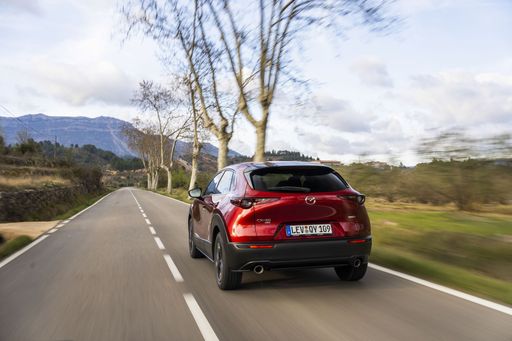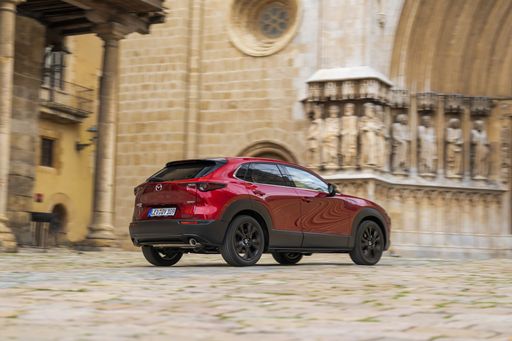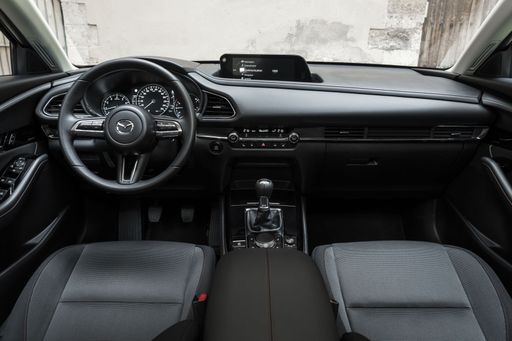Mazda MX-30 vs Hyundai IONIQ 9 – Performance, range & efficiency compared
Two cars, one duel: Mazda MX-30 meets Hyundai IONIQ 9.
Which one wins in performance, efficiency and value for money? Find out now!
Costs and Efficiency:
When it comes to price and running costs, the biggest differences usually appear. This is often where you see which car fits your budget better in the long run.
Mazda MX-30 has a significantly advantage in terms of price – it starts at 30800 £, while the Hyundai IONIQ 9 costs 58700 £. That’s a price difference of around 27866 £.
In terms of energy consumption, the advantage goes to the Mazda MX-30: with 18.30 kWh per 100 km, it’s slight more efficient than the Hyundai IONIQ 9 with 19.90 kWh. That’s a difference of about 1.60 kWh.
As for range, the Hyundai IONIQ 9 performs convincingly better – achieving up to 620 km, about 535 km more than the Mazda MX-30.
Engine and Performance:
Power, torque and acceleration say a lot about how a car feels on the road. This is where you see which model delivers more driving dynamics.
When it comes to engine power, the Hyundai IONIQ 9 has a clearly edge – offering 428 HP compared to 170 HP. That’s roughly 258 HP more horsepower.
In acceleration from 0 to 100 km/h, the Hyundai IONIQ 9 is decisively quicker – completing the sprint in 5.20 s, while the Mazda MX-30 takes 9.10 s. That’s about 3.90 s faster.
In terms of top speed, the Hyundai IONIQ 9 performs evident better – reaching 200 km/h, while the Mazda MX-30 tops out at 140 km/h. The difference is around 60 km/h.
Space and Everyday Use:
Beyond pure performance, interior space and usability matter most in daily life. This is where you see which car is more practical and versatile.
Seats: Hyundai IONIQ 9 offers distinct more seating capacity – 7 vs 5.
In curb weight, Mazda MX-30 is convincingly lighter – 1849 kg compared to 2594 kg. The difference is around 745 kg.
In terms of boot space, the Mazda MX-30 offers slight more room – 350 L compared to 338 L. That’s a difference of about 12 L.
In maximum load capacity, the Hyundai IONIQ 9 performs convincingly better – up to 2419 L, which is about 1264 L more than the Mazda MX-30.
When it comes to payload, Hyundai IONIQ 9 noticeable takes the win – 643 kg compared to 402 kg. That’s a difference of about 241 kg.
Who comes out on top?
Overall, the Hyundai IONIQ 9 shows itself to be leaves the rival little chance and secures the title of DriveDuel Champion.
It convinces with the more balanced overall package and proves to be the more versatile choice for everyday use.
Hyundai IONIQ 9
Mazda MX-30
The Mazda MX-30 is a compact crossover that combines unique design with an environmentally conscious approach. Its distinct exterior features a coupe-like silhouette and freestyle doors that offer practicality and style. Inside, the cabin boasts sustainable materials, creating a harmonious blend of modern aesthetics and eco-friendly innovation.
details @ de.mazda-press.com
@ de.mazda-press.com
 @ de.mazda-press.com
@ de.mazda-press.com
 @ de.mazda-press.com
@ de.mazda-press.com
 @ de.mazda-press.com
@ de.mazda-press.com
Hyundai IONIQ 9
The Hyundai IONIQ 9 is a bold step forward in the automotive world, combining cutting-edge electric technology with a sleek and modern design. This model stands out with its spacious interior and advanced features, ensuring both comfort and convenience for drivers and passengers alike. As Hyundai pushes the envelope in eco-friendly innovation, the IONIQ 9 represents the future of sustainable driving with its impressive range and performance capabilities.
details

|
|
|
|
|
Costs and Consumption |
|
|---|---|
|
Price
30800 - 37100 £
|
Price
58700 - 74400 £
|
|
Consumption L/100km
-
|
Consumption L/100km
-
|
|
Consumption kWh/100km
18.30 kWh
|
Consumption kWh/100km
19.9 - 20.6 kWh
|
|
Electric Range
85 km
|
Electric Range
600 - 620 km
|
|
Battery Capacity
-
|
Battery Capacity
110 kWh
|
|
co2
22 g/km
|
co2
0 g/km
|
|
Fuel tank capacity
-
|
Fuel tank capacity
-
|
Dimensions and Body |
|
|---|---|
|
Body Type
SUV
|
Body Type
SUV
|
|
Seats
5
|
Seats
7
|
|
Doors
5
|
Doors
5
|
|
Curb weight
1849 kg
|
Curb weight
2594 - 2689 kg
|
|
Trunk capacity
332 - 350 L
|
Trunk capacity
338 L
|
|
Length
4395 mm
|
Length
5060 mm
|
|
Width
1848 mm
|
Width
1980 mm
|
|
Height
1555 mm
|
Height
1790 mm
|
|
Max trunk capacity
1137 - 1155 L
|
Max trunk capacity
2419 L
|
|
Payload
402 kg
|
Payload
586 - 643 kg
|
Engine and Performance |
|
|---|---|
|
Engine Type
Plugin Hybrid
|
Engine Type
Electric
|
|
Transmission
Automatic
|
Transmission
Automatic
|
|
Transmission Detail
Reduction Gearbox
|
Transmission Detail
Reduction Gearbox
|
|
Drive Type
Front-Wheel Drive
|
Drive Type
Rear-Wheel Drive, All-Wheel Drive
|
|
Power HP
170 HP
|
Power HP
218 - 428 HP
|
|
Acceleration 0-100km/h
9.10 s
|
Acceleration 0-100km/h
5.2 - 9.4 s
|
|
Max Speed
140 km/h
|
Max Speed
190 - 200 km/h
|
|
Torque
-
|
Torque
350 - 700 Nm
|
|
Number of Cylinders
-
|
Number of Cylinders
-
|
|
Power kW
125 kW
|
Power kW
160 - 315 kW
|
|
Engine capacity
830 cm3
|
Engine capacity
-
|
General |
|
|---|---|
|
Model Year
2025
|
Model Year
2025
|
|
CO2 Efficiency Class
B
|
CO2 Efficiency Class
A
|
|
Brand
Mazda
|
Brand
Hyundai
|
What drivetrain options does the Mazda MX-30 have?
Available configurations include Front-Wheel Drive.
The prices and data displayed are estimates based on German list prices and may vary by country. This information is not legally binding.
